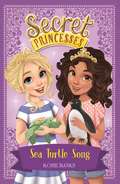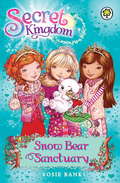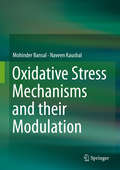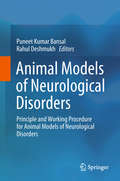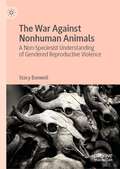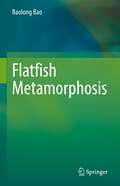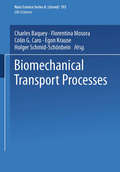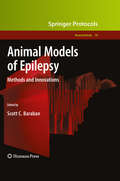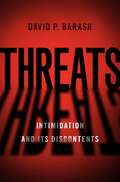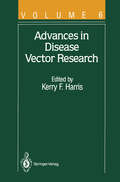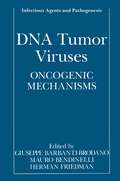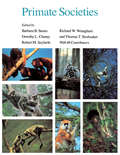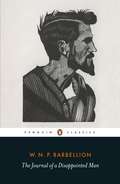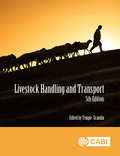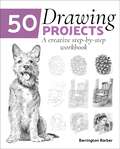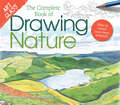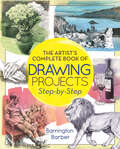- Table View
- List View
Sea Turtle Song: Book 18 (Secret Princesses #19)
by Rosie BanksMean Princess Poison has ruined the blue lagoon and made the mermaids who live there homeless! Charlotte and Mia have to grant four watery wishes to break the evil curse.Ava loves helping out at her local marine life centre, especially when the baby sea turtles are about to hatch! She just wishes that they would get to the sea safely ... Can Charlotte and Mia help her wish come true?
Snow Bear Sanctuary: Book 15 (Secret Kingdom #15)
by Rosie BanksWicked Queen Malice has cast a spell on Summer's storybook and unleashed all the fairytale baddies into the Secret Kingdom. Ellie, Summer and Jasmine are thrilled to visit the snow brownies' animal sanctuary and help look after all the cute animals. But a hungry ogre has been eating their food! Can the girls catch the ogre, get him back in the book and save the animals?
Ant and Bee: An Alphabetical Story For Tiny Tots (Ant and Bee)
by Angela BannerThese were the books that taught me how to read' Anthony Horowitz.
Ant and Bee and the ABC (Ant and Bee)
by Angela BannerThe much-loved classic series of Ant and Bee books is designed for shared reading fun! First published in 1950, Ant and Bee were in print for over 40 years. These new editions feature revised text and illustrations by original Ant and Bee creator Angela Banner. The adorably small format is perfect for little hands.
Ant and Bee and the Doctor (Ant and Bee)
by Angela BannerThe much-loved classic series of Ant and Bee books is designed for shared reading fun! First published in 1950, Ant and Bee were in print for over 40 years. These new editions feature revised text and illustrations by original Ant and Bee creator Angela Banner. The adorably small format is perfect for little hands.
Oxidative Stress Mechanisms and their Modulation
by Mohinder Bansal Naveen KaushalResearch over the years has demonstrated that free radicals mediated oxidative stress lies at the helm of almost all patho-physiological phenomena. These findings emphasize on the need to understand the underlying molecular mechanism(s) and their critical role in the pathogenesis. This book aims to focus on these areas to provide readers a comprehensive outlook about the major redox sensitive pathways and networks involved in various disease conditions. In the first chapter of the book, basic information about the oxidative stress, its generation, its biomarkers and its role in body are discussed. In the next three chapters, the role of oxidative stress in various pathologies ranging from neurological disorders, to cardiovascular diseases, cancers, metabolic diseases and ageing have been described. Chapter 5 cumulatively describes the most important molecular signaling pathways that are affected by reactive oxygen species (ROS). These are the mechanisms which are common denominators in various pathological states. In the next part of the book, various antioxidant strategies to target and mitigate ROS have been discussed with details on the mechanisms. Selenium, being the research focus and interest of the authors for years, the role of selenium as an antioxidant as part of selenoproteins has been included in the book. Finally, the book culminates with authors’ perspective on the future of the redox biology field. Throughout the book, efforts have been made to use simplified language and suitable figures for ease to understand the contents. Although the authors have tried to touch on all the different aspects of oxidative stress in detail, the fact that it is a continuously growing field with updates coming every day, there might be some areas which might not be described in depth. This book is designed for students, young scientists to get acquainted with the redox biology. Overall, this book is a reference to understand the redox regulation of cellular signaling pathways involved in pathogenesis.
Animal Models of Neurological Disorders: Principle and Working Procedure for Animal Models of Neurological Disorders
by Puneet Kumar Bansal Rahul DeshmukhThis book introduces undergraduate, postgraduate and research students and scientists to animal models of neurological disorders, along with their working principle and brief procedures. Addressing all the disorders related to the central nervous system (CNS) in a single platform, on the basis of various literature surveys it describes different procedures to induce a single disease with the help of toxins/chemicals. It also includes numerous protocols for inducing single neurological diseases, thus fulfilling an urgent need for a book that makes specific procedures for neurological disorders available, so that specific disease can be induced in laboratories according to the availability of resources. Further, it acquaints readers with the pathological changes that occur in a particular neurological disorder, which reflect specific signs and symptoms of any particular disease, and examines how they affect everyday life. It is a valuable resource for researchers aiming to eradicate or improve neurological disorders by testing the benefits of different drugs.
The War Against Nonhuman Animals: A Non-Speciesist Understanding of Gendered Reproductive Violence
by Stacy BanwellWe are currently engaged in an existential species war against nonhuman animals. This book argues that, during this war, nonhuman animals should be granted legal personhood and treated as ‘protected persons’ rather than the property of ‘protected persons.’ The main argument is that War Crimes and Crimes against Humanity – rape, forced pregnancy and other acts of sexual violence – are being committed within the meat, egg and dairy industries. Avoiding ‘dreaded comparisons’, the book explores shared sources of oppression between human and nonhuman animals who are subject to the expressions and consequences of reproductive violence. It asks: what drives and facilitates the war against nonhuman animals? And what are the global consequences of this war? Throughout, it demonstrates how racism, sexism, and speciesism informs both intrahuman violence and the violence(s) of the animal-industrial complex. Ultimately the book asks us to reconsider what it means to be human.
Flatfish Metamorphosis
by Baolong BaoThis book provides a comprehensive discussion of the development and evolution of flatfish metamorphosis. The chapters use the tissue model to explain a series of metamorphic events, including eye migration, front bone deformation, dorsal fin elongation and regression, and body depth change, left/right asymmetrical pigmentation, give a hypothesis on the mechanism of eye migration, and the evolutionary origin of left/right eye asymmetry. The book is written by expert who has worked on flatfish metamorphosis over 20 years. It serves as a valuable reference for graduate students and researchers in related fields
Biomechanical Transport Processes (Nato Science Series A: #193)
by Charles BaqueyProceedings of a NATO ARW held in Cargese, France, October 9-13, 1989
Threats: Intimidation and Its Discontents
by David P. Barash"It's a rare author who can combine literary erudition and an easy fluency of style together with expert knowledge of psychology and evolutionary biology. David Barash adds to all this a far-seeing wisdom and a humane decency that shines through on every page. The concluding section on the senseless and dangerous futility of nuclear deterrence theory is an irrefutable tour de force which should be read by every politician and senior military officer. If only!" -- Richard Dawkins From hurricanes and avalanches to diseases and car crashes, threats are everywhere. Beyond objective threats like these, there are also subjective ones: situations in which individuals threaten each other or feel threatened by society. Animals, too, make substantial use of threats. Evolution manipulates threats like these in surprising ways, leading us to question the ethics of honest versus dishonest communication. Rarely acknowledged--and yet crucially important--is the fact that humans, animals, and even plants don't only employ threats, they often respond with counter-threats that ultimately make things worse. By exploring the dynamic of threat and counter-threat, this book expands on many fraught human situations, including the fear of death, of strangers, and of "the other." Each of these leads to unique challenges, such as the specter of eternal damnation, the murderous culture of guns and capital punishment, and the emergence of right-wing nationalist populism. Most worrisome is the illusory security of deterrence, the idea that we can use the threat of nuclear war to prevent nuclear war! Threats are so widespread that we often don't realize how deeply they are ingrained in our minds or how profoundly and counter-productively they operate. Animals, humans, societies, and even countries internalize threats, behind which lie a myriad of intriguing questions: How do we know when to take a threat seriously? When do threats make things worse? Can they make things better? What can we do to use them wisely rather than destructively? In a comprehensive exploration into questions like these, noted scientist David P. Barash explains some of the most important characteristics of life as we know it.
Threats: Intimidation and Its Discontents
by David P. Barash"It's a rare author who can combine literary erudition and an easy fluency of style together with expert knowledge of psychology and evolutionary biology. David Barash adds to all this a far-seeing wisdom and a humane decency that shines through on every page. The concluding section on the senseless and dangerous futility of nuclear deterrence theory is an irrefutable tour de force which should be read by every politician and senior military officer. If only!" -- Richard Dawkins From hurricanes and avalanches to diseases and car crashes, threats are everywhere. Beyond objective threats like these, there are also subjective ones: situations in which individuals threaten each other or feel threatened by society. Animals, too, make substantial use of threats. Evolution manipulates threats like these in surprising ways, leading us to question the ethics of honest versus dishonest communication. Rarely acknowledged--and yet crucially important--is the fact that humans, animals, and even plants don't only employ threats, they often respond with counter-threats that ultimately make things worse. By exploring the dynamic of threat and counter-threat, this book expands on many fraught human situations, including the fear of death, of strangers, and of "the other." Each of these leads to unique challenges, such as the specter of eternal damnation, the murderous culture of guns and capital punishment, and the emergence of right-wing nationalist populism. Most worrisome is the illusory security of deterrence, the idea that we can use the threat of nuclear war to prevent nuclear war! Threats are so widespread that we often don't realize how deeply they are ingrained in our minds or how profoundly and counter-productively they operate. Animals, humans, societies, and even countries internalize threats, behind which lie a myriad of intriguing questions: How do we know when to take a threat seriously? When do threats make things worse? Can they make things better? What can we do to use them wisely rather than destructively? In a comprehensive exploration into questions like these, noted scientist David P. Barash explains some of the most important characteristics of life as we know it.
Advances in Disease Vector Research (Advances in Disease Vector Research #6)
by S. Barbagallo M. R. Brown W. Burgdorfer F. H. Collins V. Finnerty D. A. Golino S. F. Hayes H. Hibino A. O. Lea G. P. Martelli J. Nedelman G. N. Oldfield S. M. Paskewitz R. T. Plumb A. H. Purcell B. Raccah C. N. Roistacher C. E. Taylor R. D. WardI think the reader will agree that we have attained a good balance in Volume 6 between human-or animal-host and plant-host-related topics from outstanding research scientists. In Chapter 1, Frank Collins, Susan Paskewitz, and Victoria Finnerty explore the potential of recombinant DNA technology to distinguish indi vidual species and to establish phylogenetic relationships among member species in the Anopheles gambiae species complex, which includes the principal malaria vectors. Currently, relatively little is known about these morphologically identical species that are sympatric over most of their range but are not always equally involved in malaria transmission. With respect to individual species identification, the researchers have thus far described two DNA fragments, derived from the ribosomal DNA interge nic spacer region, that reliably distinguish five species in the complex by means of an RFLP visualized on a Southern blot. They have also described other species-specific fragments derived from a ribosomal DNA intron that could form the basis for a rapid dot blot assay. With respect to the phylogenetic relationships among member species in the complex, Collins, Paskewitz, and Finnerty focus on a comparison at the level of restriction site mapping and Southern analysis of the rDNA intergenic spacer regions. As expected, the two spacer regions near the coding region junctions are well conserved among the species, whereas the central regions tend to be highly variable among member species in the complex.
DNA Tumor Viruses: Oncogenic Mechanisms (Infectious Agents and Pathogenesis)
by Giuseppe Barbanti-Brodano Mauro Bendinelli Herman FriedmanDNA tumor viruses have long been useful experimental models of carcinogenesis and have elucidated several important mechanisms of cell transformation. Re search in recent years has shown that human tumors have a multifactorial nature and that some DNA tumor viruses may playa key role in their etiology. The aim of this book is to assess our knowledge of DNA tumor viruses by reviewing animal models, mechanisms of transformation, association with human tumors, and possi bilities of prevention and control by vaccination. Animal models of tumor virology have contributed significantly to our under standing of the epidemiology and pathogenesis of virus-induced tumors. Bovine papillomaviruses induce papillomas in the intestine of cattle. The papillomas undergo a transition to carcinomas in cows feeding on bracken fern, which pro duces a toxin with radiomimetic and immunosuppressive functions. This example of cooperation between a virus and chemical carcinogens parallels the cooperative role of human papillomaviruses (HPVs) and herpes simplex virus type 2 (HSV-2) with environmental carcinogens in the pathogenesis of cervical cancer. Likewise, hepatocarcinomas appearing in woodchucks chronically infected by woodchuck hepatitis virus (WIN) provide strong support for the relationship between hepatitis B virus (HBV) infection and human hepatocellular carcinoma. Also, the fact that WIN DNA integrates closely to cellular oncogenes suggests a possible molecular mechanism for the tumorigenesis induced by HBV.
Primate Societies
by Barbara B. Smuts, Dorothy L. Cheney, Robert M. Seyfarth, Richard W. Wrangham and Thomas T. StruhsakerPrimate Societies is a synthesis of the most current information on primate socioecology and its theoretical and empirical significance, spanning the disciplines of behavioral biology, ecology, anthropology, and psychology. It is a very rich source of ideas about other taxa. "A superb synthesis of knowledge about the social lives of non-human primates."—Alan Dixson, Nature
Primate Societies
by Barbara B. Smuts, Dorothy L. Cheney, Robert M. Seyfarth, Richard W. Wrangham and Thomas T. StruhsakerPrimate Societies is a synthesis of the most current information on primate socioecology and its theoretical and empirical significance, spanning the disciplines of behavioral biology, ecology, anthropology, and psychology. It is a very rich source of ideas about other taxa. "A superb synthesis of knowledge about the social lives of non-human primates."—Alan Dixson, Nature
The Journal of a Disappointed Man: The Journal Of A Disappointed Man; A Last Diary; Enjoying Life And Other Literary Remains
by W. N. BarbellionThe young naturalist W. N. P. Barbellion described this remarkably candid record of living with multiple sclerosis as 'a study in the nude'. It begins as an ambitious teenager's notes on the natural world, and then, following his diagnosis at the age of twenty-six, transforms into a deeply moving account of battling the disease. His prose is full of humour and fierce intelligence, and combines a passion for life with clear-sighted reflections on the nature of death. Barbellion selected and edited this manuscript himself in 1917, adding a fictional editor's note announcing his own demise. This Penguin Classics edition includes 'The Last Diary', which covers the period between submission of the manuscript and Barbellion's actual death in 1919.
Livestock Handling and Transport: Principles And Practice
by Adrian Barber Faith Baier Keith Belk Donald Broom Michelle S. Calvo-Lorenzo Michael Cockram Lorna Coppinger Raymond Coppinger Trevor DeVries Roger Ewbank Luigi Faucitano Robert B. Freeman Wendy K Fulwider Carmen Gallo Arlene Garcia-Marquez Peter Goddard Paul Hemsworth Stella Maris Huertas Anna Johnson Katherine A. Houpt Geoffrey D. Hutson Mateus J.R. Costa Miriam Parker Clive Phillips Matthew J. Ritter Karen Schwartzkopf-Genswein Meagan King E. Bert Lambooij Genaro C. Lama Pol Llonch Obiols Edmond A. Pajor Emma Fabreger Romans Frank Tuyttens Antonio Velarde Kurt Vogel Claire A Weeks Carissa L. WickensEdited by world-renowned animal scientist Dr Temple Grandin, this practical book integrates scientific research and industry literature on cattle, pigs, poultry, sheep, goats, deer, and horses, in both the developed and developing world, to provide a practical guide to humane handling and minimizing animal stress. Reviewing the latest research on transport systems, restraint methods and facilities for farms and slaughterhouses, this fully updated fifth edition of Livestock Handling and Transport includes five new chapters: The Introduction, Genetics and Handling, Goat Handling and Transport, Robotic Milking, and Transport of Livestock by Sea. There is also new coverage of temperament testing and change, the principles of good stockmanship as well as including new video material to further explain key information contained in the book. Key features include: - Edited by world-renowned animal scientist Temple Grandin. - Two new chapters on the testing and control of temperament and the principles of good stockmanship. - Online videos to further illustrate the key points.
Satchelmouse and the Dinosaurs (New edition) (PDF)
by Antonia BarberSatchelmouse and his friend show great promise as the hero and heroine of a series of books.</p Sarah and her school friends are working with modeling clay, creating a dinosaur world. Sarah makes a diplodocus whose neck is too short and whose one leg is shorter than the others. When Satchelmouse blows his magic trumpet, they find themselves in a dinosaur world, where a young diplodocus is running from a fierce tyrannosaurus. Sarah and Satchelmouse help the dinosaur out by lengthening his neck and his foot.
Satchelmouse and the Dinosaurs (New edition) (PDF)
by Antonia BarberSatchelmouse and his friend show great promise as the hero and heroine of a series of books.</p Sarah and her school friends are working with modeling clay, creating a dinosaur world. Sarah makes a diplodocus whose neck is too short and whose one leg is shorter than the others. When Satchelmouse blows his magic trumpet, they find themselves in a dinosaur world, where a young diplodocus is running from a fierce tyrannosaurus. Sarah and Satchelmouse help the dinosaur out by lengthening his neck and his foot.
50 Drawing Projects: A Creative Step-by-Step Workbook
by Barrington BarberIn this imaginative new book, Barrington Barber presents an array of interesting subjects, including people, pets and everyday objects in and around the home. Each project is broken down into easy-to-follow steps which culminate in a finished drawing. The reader is then invited to make his or her own version of the subject. Combining guidance for beginners with challenging subjects for more experienced artists, 50 Drawing Projects is a relaxing way to discover and develop one of life's most rewarding creative skills.Subjects include:• Still lifes• Animals• Flowers• People
Art Class: How to Create Your Own Artwork (Art Class)
by Barrington BarberThis full-colour drawing book guides readers through the many aspects of the natural world, written by internationally bestselling practical art author Barrington Barber. Presented in a useful lay-flat landscape format, this essential reference guide includes accessible step-by-step drawing projects starting with a close observation of plants and flowers, before exploring the possibilities of still lifes that can be made in the comfort of your own home. Other subjects include: • Outdoor elements, including tress, rocks, water and sky • Animals, from crabs to tigers • Landscapes and their composition Whether you are drawing in a garden, a park or the open countryside, you will find it extremely rewarding to create a record of where you have been and a feel greater connection to the natural world.With clear, practical advice for every step of the process for artists at every level, from the basics of choosing supplies to advanced techniques, this is the ultimate guide to nature drawing. ABOUT THE SERIES: Arcturus' Art Class books are a curated series of instructional art and craft titles designed to inspire artists of all levels, from beginner to professional. Stunningly presented in full colour, and in a highly usable landscape format, these comprehensive books are packed with all the ideas, inspirations, step-by-step projects, and techniques you'll need to master the subject covered.
The Artist's Complete Book of Drawing Projects Step-by-Step
by Barrington BarberWhen it comes to drawing there is no substitute for practice, and with this collection of 100 drawing projects you'll never be short of inspiration. From capturing the play of light in a sparkling water glass to composing a family portrait, there is a wide range of subject matter to develop your skills. Each drawing is broken down into five easy steps, so you can see exactly how tone is applied at every stage. Whether you are budding artist or a professional wishing to hone their skills, Barrington Barber's accessible teaching style makes this a must-have manual for those looking to improve their drawing using a relaxed but effective method.
